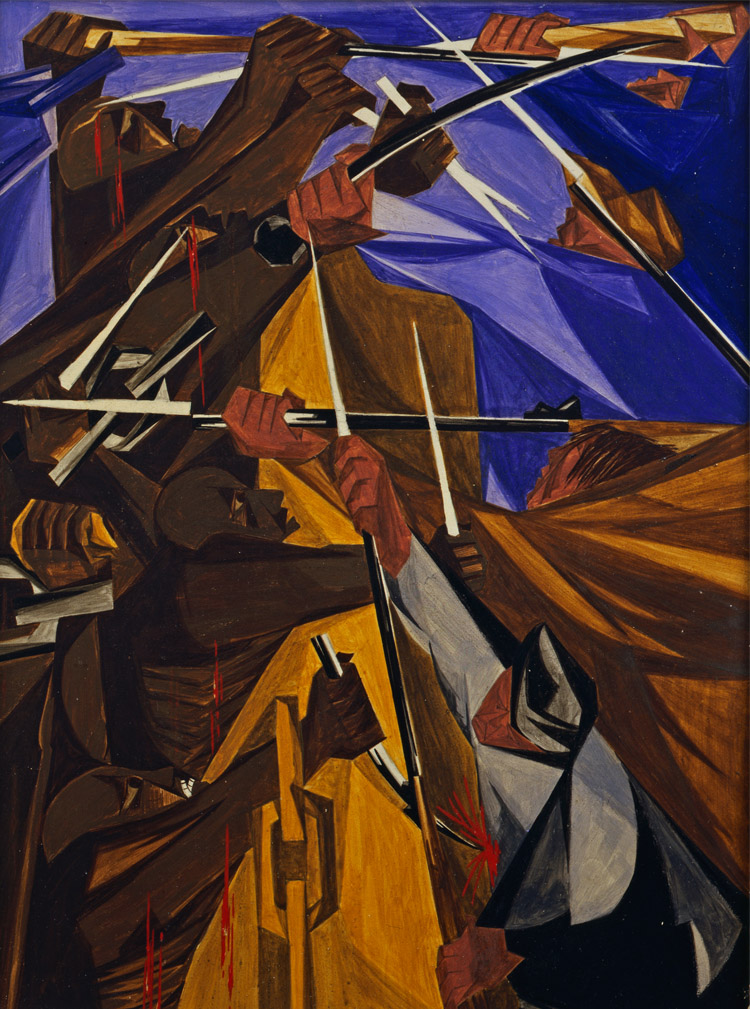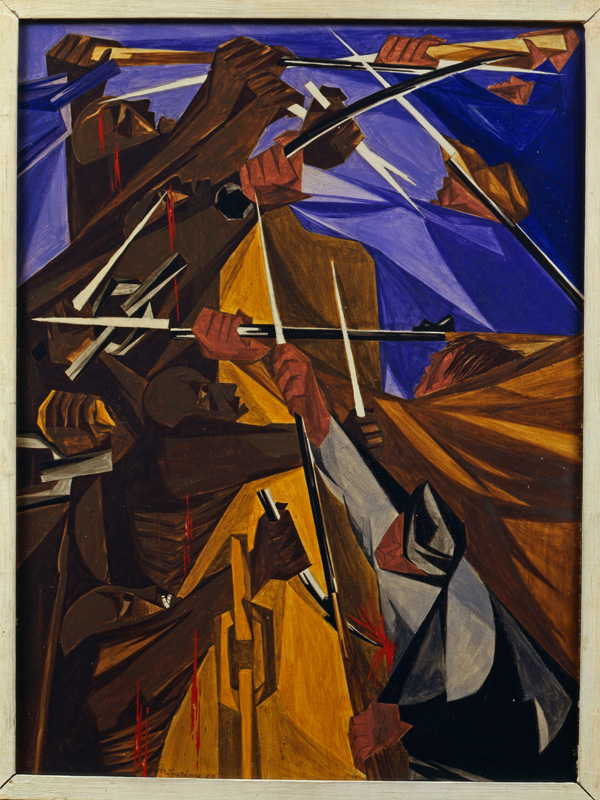
Jacob Lawrence, Struggle … From the History of the American People, no. 5: We have no property! We have no wives! No children! We have no city! No country!– Petition of Many Slaves, 1773, 1955. Egg tempera on hardboard, 12 x 16 in. Private Collection of Harvey and Harvey-Ann Ross. © 2015 The Jacob and Gwendolyn Knight Lawrence Foundation, Seattle / Artists Rights Society (ARS), New York
This spring, former Phillips curator Beth Turner taught an undergraduate practicum at the University of Virginia focusing on Jacob Lawrence’s Struggle series. In this multi-part blog series, responses from Turner’s students in reference to individual works from the series will be posted each week. Read the introductory post here.
We have no property! We have no wives! No children! We have no city! No country! —Petition of Many Slaves, 1773
The struggle here is related to a slave revolt. The gold-colored mountain or wall in the center is representative of the impenetrable American government that refused to listen to the slaves’ petitions for a better, free life. Lawrence composed this panel to emphasize hardship, but still an unwavering courage to continue fighting.
One of the slaves who participated in a petition for emancipation in 1773 was Felix Holbrook. Holbrook was living in Boston and was a neutralist. This caption is a quote in a letter that Holbrook wrote to the provincial legislature of Massachusetts. He wrote the letter on behalf of his fellow slaves with the intention of finally gaining freedom. The letter was one in a series of four petitions. Holbrook narrates a life of hardship in his petition that compliments Lawrence’s ability to capture the fed-up, but forever brave sentiment of Felix’s letter.
Amy Woo


